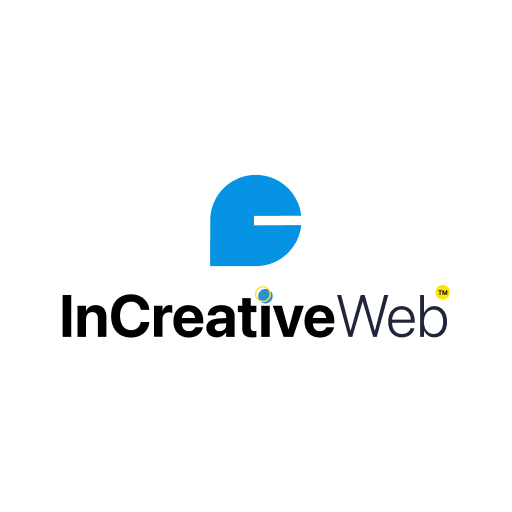Google Ads Management
Specialize in creating, managing, and optimizing Google Ads campaigns for businesses across various industries
Free Audit7 Days Free Trial
Certified experts will analyze your account, assess your campaign strategies, and provide valuable insights to enhance your advertising performance.
Google Ads Management
Google Ads management involves the strategic planning, implementation, monitoring, and optimization of advertising campaigns within the Google Ads platform. It aims to maximize the return on investment (ROI) by efficiently utilizing advertising budgets to achieve specific business objectives

Understanding Business Goals
Initial Consultation and Discovery:
- Conducting in-depth discussions with the client to understand their business model, products/services offered, unique selling propositions (USPs), target audience, and competitive landscape.
- Identifying short-term and long-term business objectives, whether it’s increasing sales, generating leads, boosting website traffic, enhancing brand visibility, entering new markets, etc.
Setting SMART Goals:
- Collaborating with the client to establish Specific, Measurable, Achievable, Relevant, and Time-bound (SMART) goals.
- For instance, a goal could be to increase online sales by 20% within the next quarter or to generate 500 leads per month through the website contact form.
Aligning Goals with Advertising Strategy:
- Translating these business objectives into actionable advertising strategies within Google Ads.
- For example, if the goal is to increase online sales, the focus might be on creating highly targeted product-specific campaigns with optimized landing pages.
Determining Key Performance Indicators (KPIs):
- Defining the metrics that directly measure the success of advertising efforts in relation to the established goals.
- KPIs may include conversion rates, click-through rates, cost per acquisition (CPA), return on ad spend (ROAS), lead generation numbers, etc.
Budget and Resource Alignment:
- Discussing budgetary constraints and allocating resources appropriately to achieve the set objectives.
- Determining an ad spend that aligns with the goals and ensures maximum return on investment (ROI).
Continuous Goal Evaluation and Adjustment:
- Regularly reviewing the performance of the Google Ads campaigns against the established goals.
- Adjusting strategies and tactics if the initial goals evolve or if campaign performance indicates a need for optimization to better align with the business objectives.

Keyword Research
Keyword research is a crucial aspect of Google Ads Management as it lays the groundwork for creating targeted and effective advertising campaigns.
Understanding the Business and Offerings:
- Begin by thoroughly understanding the client’s business, products, services, and target audience.
- Identify the unique selling propositions (USPs) and key features that differentiate the business.
Brainstorming and Seed Keywords:
- Start with brainstorming sessions to generate seed keywords or phrases related to the business, industry, products, or services.
- Use input from the client, internal team discussions, industry knowledge, and customer language to compile an initial list of keywords.
Keyword Expansion Tools and Platforms:
- Utilize keyword research tools like Google Keyword Planner, SEMrush, Ahrefs, Moz Keyword Explorer, or Ubersuggest.
- Enter seed keywords into these tools to generate a broader list of relevant keywords, including variations, long-tail keywords, and related terms.
- Analyze metrics such as search volume, competition, cost-per-click (CPC), and keyword difficulty to prioritize keywords.
Competitor Analysis:
- Analyze competitors’ websites and ads to identify keywords they are targeting and ranking for.
- Discover gaps and opportunities by understanding which keywords competitors might be overlooking.
Long-Tail Keywords and User Intent:
- Focus on long-tail keywords that are more specific and have lower competition.
- Consider user intent behind the keywords (informational, navigational, transactional) to align with the stage of the customer journey.
Grouping and Segmentation:
- Organize the keywords into thematic groups or ad groups based on relevancy and similarity.
- Grouping keywords helps in creating more targeted ad copy and landing pages for better performance.
Negative Keywords:
- Identify and include negative keywords—terms that are irrelevant or not aligned with the business offerings—to prevent ads from showing for irrelevant searches.
- Constantly refine the negative keyword list based on search terms triggering irrelevant clicks.
Refinement and Iteration:
- Continuously refine the keyword list based on performance data and ongoing research.
- Test and experiment with new keywords while removing underperforming ones to optimize campaign effectiveness.
Keyword Match Types:
- Understand and utilize different keyword match types (broad match, phrase match, exact match, broad match modifier) to control how closely the keywords must match user searches.
Seasonality and Trends:
- Consider seasonality and trends in keyword research to adapt campaigns accordingly and capitalize on timely opportunities.
A robust keyword research strategy forms the backbone of successful Google Ads campaigns. By understanding user behavior, intent, and the competitive landscape, advertisers can create targeted campaigns that effectively reach and engage their intended audience.

Ad Creation
Creating compelling ads in Google Ads is crucial for grabbing users’ attention, encouraging clicks, and driving conversions.
Relevance to Keywords and Landing Pages:
- Ensure that ad copy is directly relevant to the keywords being targeted and aligns with the content on the landing page. This relevance improves Quality Score and user experience.
Unique Selling Proposition (USP):
- Highlight the business’s unique benefits or offerings that differentiate it from competitors. Communicate the USP clearly and succinctly within the ad.
Compelling Headlines:
- Create attention-grabbing headlines that are concise, engaging, and include relevant keywords. Use power words or numbers to draw attention.
Use of Ad Extensions:
- Take advantage of ad extensions (site links, callouts, structured snippets, etc.) to provide additional information, increase ad visibility, and encourage user interaction.
Clear Call-to-Action (CTA):
- Include a strong and actionable CTA that prompts users to take the desired action, such as “Buy Now,” “Sign Up Today,” “Learn More,” etc.
Ad Copywriting Best Practices:
- Craft compelling ad copy that addresses user needs, showcases benefits, and speaks directly to the target audience’s pain points or desires.
- Use persuasive language, highlight value propositions, and offer solutions to users’ problems.
Mobile Optimization:
- Ensure ad copy is optimized for mobile devices, as a significant portion of searches occur on mobile. Use shorter, punchier content that fits mobile screens.
Experiment with Ad Variations:
- Create multiple ad variations for each ad group to perform A/B tests. Test different headlines, descriptions, CTAs, and variations in ad copy to identify what resonates best with the audience.
Ad Formatting and Ad Preview:
- Preview ads in the Google Ads interface to see how they’ll appear on desktop and mobile devices. Ensure proper formatting, correct spelling, and a visually appealing layout.
Ad Compliance and Policies:
- Adhere to Google Ads policies and guidelines regarding restricted content, trademarks, capitalization, punctuation, and other ad-specific rules to prevent disapproval or suspension.
Continuous monitoring of ad performance metrics such as Click-Through Rate (CTR), Conversion Rate, and Quality Score is essential. This allows for ongoing optimization and refinement of ad creatives to maximize their effectiveness and drive better results within Google Ads campaigns.

Bid Management
Bid management in Google Ads is a critical aspect of campaign optimization that involves setting, adjusting, and monitoring the maximum amount an advertiser is willing to pay for a click on their ad.
Understand Bid Strategies:
- Familiarize yourself with different bid strategies available in Google Ads, such as Manual CPC, Target CPA, Target ROAS, Enhanced CPC, and maximize clicks or conversions. Choose the strategy aligning with campaign goals.
Keyword-Level Bidding:
- Set bids at the keyword level to ensure that bids reflect the value of each keyword in driving conversions. Adjust bids based on keyword performance.
Ad Positioning and CPC:
- Consider the desired ad position on search engine results pages (SERPs) and set bids accordingly. Higher positions generally require higher CPC bids.
Bid Adjustments for Devices and Locations:
- Utilize bid adjustments for devices (mobile, desktop, tablet) and geographical locations to account for variations in performance across different segments.
Bid Modifiers for Time and Demographics:
- Use bid modifiers for specific times of the day, days of the week, or demographic segments to optimize bids based on when and to whom ads are displayed.
Automated Bidding and Machine Learning:
- Explore automated bidding strategies that leverage machine learning to optimize bids based on historical data, allowing for more efficient and effective bidding.
Bid Optimization Based on Performance:
- Regularly analyze performance metrics such as CTR, Conversion Rate, and ROAS to adjust bids for underperforming keywords or ad groups.
Bid Simulations and Forecasts:
- Use bid simulators and forecasting tools within Google Ads to understand how changes in bids might impact ad performance and to make informed bid adjustments.
Competitor Bid Monitoring:
- Keep an eye on competitor activity and adjust bids accordingly to maintain or improve ad positioning while staying within budget constraints.
Budget Management and Bid Adjustments:
- Allocate budget effectively across campaigns and make bid adjustments to ensure the best use of available funds, focusing on high-converting keywords or audiences.
Continuous monitoring, testing bid strategies, and making data-driven adjustments based on performance metrics are crucial for effective bid management in Google Ads. It’s an ongoing process aimed at maximizing ad visibility, clicks, and conversions while optimizing the return on ad spend.

Bid Management
Targeting and audience segmentation in Google Ads are vital for reaching the right audience with relevant messaging.
Demographic Targeting:
- Utilize demographic data (age, gender, household income, parental status, etc.) to target specific audience segments that align with the product or service offering.
Geographic Targeting:
- Target audiences based on geographical location, including countries, regions, cities, or radius targeting around a specific location. This is crucial for local businesses or region-specific campaigns.
Device Targeting:
- Segment audiences based on device types (desktop, mobile, tablet) to optimize ad experiences and bids according to device preferences and behaviors.
Audience Lists and Remarketing:
- Create and utilize audience lists based on website visitors, customer emails, app users, or specific interactions to retarget users with tailored ads, encouraging conversions.
Interest and Behavioral Targeting:
- Reach audiences based on their interests, behaviors, browsing history, and online activities. Leverage Google’s data on user behavior to target users with relevant ads.
Custom Intent Audiences:
- Create custom intent audiences based on users’ search behavior. Target users who are actively researching or showing intent related to the products or services offered.
Similar Audiences:
- Expand reach by targeting users similar to existing customers or website visitors. Use Google’s machine learning algorithms to find and target audiences with similar characteristics.
In-Market Audiences:
- Target users actively researching or showing purchase intent within specific product or service categories. Reach users more likely to convert based on their recent behavior.
Exclusion Targeting:
- Exclude specific audiences or demographics that are not relevant to avoid spending budget on irrelevant clicks. This includes negative targeting of certain demographics or user behaviors.
Layering Targeting Options:
- Combine different targeting options to create highly specific and refined audience segments. For example, targeting women, aged 25-34, interested in fitness, and located in a particular city.
Regularly analyze the performance of different audience segments, adjust targeting parameters based on conversion data and audience behavior, and refine targeting strategies to optimize ad campaigns. Effective targeting and segmentation can significantly enhance campaign performance by ensuring ads are shown to the most relevant audience likely to convert.

Ad Extensions
Ad extensions in Google Ads provide additional information, visibility, and opportunities for users to engage with your ads.
Site Link Extensions:
- Include additional links below the main ad text that direct users to specific pages on your website. Use them to showcase different product categories, services, or important pages.
Callout Extensions:
- Highlight key features, benefits, or offers with short, descriptive text that appears below the ad. Use callouts to emphasize unique selling points and promotions.
Structured Snippet Extensions:
- Display specific aspects or categories of products/services offered. Use structured snippets to showcase different product lines, service categories, brands, or amenities.
Call Extensions:
- Include a clickable phone number in the ad, enabling users to call your business directly from the search results. Useful for businesses that rely on phone inquiries or conversions.
Location Extensions:
- Display your business address, phone number, and a link to directions. Particularly beneficial for local businesses aiming to drive foot traffic to physical locations.
Message Extensions:
- Allow users to send text messages to your business directly from the ad. Suitable for businesses that prefer communication via messaging or for quick inquiries.
Price Extensions:
- Display pricing information for specific products or services directly in the ad. Use price extensions to showcase various offerings with their respective prices.
Promotion Extensions:
- Highlight special offers, discounts, or promotions running for a limited period. Use promotion extensions to attract users with enticing deals.
Lead Form Extensions:
- Enable users to submit their contact information directly through the ad without visiting your website. Useful for lead generation campaigns.
Automated Extensions:
- Allow Google to automatically add certain extensions based on available data. Monitor and optimize automated extensions to ensure relevance and accuracy.
Consider the relevance of each extension to your business goals and the ad’s purpose. Test different combinations of extensions, monitor their performance, and regularly optimize to maximize ad visibility, user engagement, and overall campaign effectiveness. Strategic use of ad extensions can significantly improve ad performance by providing users with more information and opportunities to interact with your ads.

Performance Monitoring and Analysis
Monitoring and analyzing the performance of Google Ads campaigns is essential for optimizing their effectiveness and achieving desired results.
Key Performance Indicators (KPIs):
- Define and track relevant KPIs aligned with campaign objectives, such as Click-Through Rate (CTR), Conversion Rate, Cost Per Acquisition (CPA), Return on Ad Spend (ROAS), and Quality Score.
Conversion Tracking:
- Implement conversion tracking to measure actions that align with campaign goals, such as form submissions, purchases, phone calls, or other desired outcomes.
Google Analytics Integration:
- Integrate Google Ads with Google Analytics to gain deeper insights into user behavior, website interactions, and how ad traffic contributes to conversions.
Performance by Campaign, Ad Group, and Keyword:
- Analyze performance metrics at different levels (campaign, ad group, keyword) to identify top-performing and underperforming segments. Allocate budget and focus on high-performing areas.
A/B Testing and Experimentation:
- Conduct A/B tests to compare different ad variations, landing pages, or targeting strategies. Analyze the results to identify what resonates best with the audience and improves performance.
Budget Allocation and Spend Analysis:
- Monitor budget utilization across campaigns and ad groups. Adjust budgets based on performance to allocate more funds to high-performing areas and reallocate or pause underperforming ones.
Search Terms Report Analysis:
- Review search terms that triggered your ads. Identify irrelevant or high-performing keywords to add as negatives or incorporate into your targeting strategy.
Ad Schedule and Geographic Performance:
- Analyze performance by time of day, day of the week, or geographic location. Optimize bids and ad schedules based on when and where your audience is most active.
Attribution Modeling:
- Use different attribution models (first-click, last-click, linear, time decay, etc.) to understand how different touchpoints contribute to conversions. Adjust strategies based on attribution insights.
Regular Reporting and Data Visualization:
- Generate and review comprehensive reports regularly. Visualize data using charts or graphs to easily identify trends, patterns, or areas requiring optimization.
Regularly monitoring performance metrics, conducting in-depth analyses, and leveraging insights obtained from data analysis is crucial for making informed decisions and optimizing Google Ads campaigns effectively. It allows marketers to refine strategies, allocate resources wisely, and continually improve campaign performance towards achieving desired business goals.

A/B Testing
A/B testing, also known as split testing, is a method used in Google Ads to compare different versions of ads, landing pages, or campaign elements to determine which performs better.
Identify Test Objectives:
- Define clear and specific objectives for the A/B test, whether it’s improving click-through rates, increasing conversions, or enhancing ad engagement.
Choose a Single Variable:
- Focus on testing one element at a time, such as ad headlines, descriptions, images, CTAs, landing page layouts, or targeting options.
Create Variations:
- Develop multiple versions (A and B) of the element being tested, ensuring they differ only in the variable being evaluated. Maintain consistency in other aspects.
Split Traffic Evenly:
- Split the audience evenly between the variations to ensure a fair comparison. Use Google Ads’ built-in A/B testing features or third-party tools for accurate distribution.
Run Tests Simultaneously:
- Start both variations simultaneously to minimize the impact of external factors (like changes in market trends) and ensure the validity of the test results.
Set a Clear Testing Duration:
- Determine a sufficient testing period to gather statistically significant data. Avoid prematurely concluding tests; give them enough time to collect meaningful results.
Track and Measure Results:
- Monitor performance metrics such as CTR, Conversion Rate, CPA, or ROAS for each variation. Use Google Ads’ reporting tools or analytics to track results accurately.
Statistical Significance:
- Analyze the data to ensure statistical significance. Tools or calculators can help determine if the differences observed are statistically relevant or due to chance.
Implement Winning Variation:
- Once a winning variation is identified (based on the defined objective and statistical significance), implement it permanently to improve campaign performance.
Continuous Testing and Iteration:
- A/B testing should be an ongoing process. After implementing a winning variation, continue testing and iterating to refine strategies further and achieve better results.
Remember, A/B testing is a valuable tool for optimizing Google Ads campaigns, but it requires careful planning, patience, and attention to detail. By systematically testing and analyzing different elements, marketers can gain valuable insights and continuously improve ad performance, ultimately leading to more effective advertising campaigns.

Landing Page Optimization
Landing page optimization is crucial for maximizing the effectiveness of Google Ads campaigns and improving the overall conversion rate.
Align with Ad Messaging:
- Ensure consistency between the ad copy and the landing page content. The messaging, keywords, and offer should match to provide a seamless user experience.
Clear and Compelling Headline:
- Use a clear and attention-grabbing headline that reiterates the ad’s message and immediately communicates the value proposition to visitors.
Strong Call-to-Action (CTA):
- Include a prominent and actionable CTA that guides visitors toward the desired action, whether it’s making a purchase, signing up, or requesting more information.
Simplify Page Layout and Design:
- Keep the design clean, uncluttered, and easy to navigate. Use whitespace effectively to direct attention to crucial elements like CTAs and key information.
Mobile Responsiveness:
- Ensure the landing page is optimized for mobile devices, as a significant portion of traffic comes from mobile users. Pages should load quickly and display correctly on various screen sizes.
Load Speed Optimization:
- Optimize page load speed to reduce bounce rates. Compress images, minimize server response time, and utilize caching to improve performance.
Compelling and Relevant Content:
- Provide valuable and relevant content that addresses visitors’ needs, answers their questions, and emphasizes the benefits of your product or service.
Social Proof and Trust Signals:
- Include testimonials, reviews, trust badges, or certifications to build credibility and trust with visitors, reassuring them about your reliability and quality.
Clear and Relevant Images or Visuals:
- Use high-quality images or visuals that support the message and showcase the product/service. Visual content can enhance engagement and comprehension.
A/B Testing and Iteration:
- Continuously test different elements (CTAs, headlines, images, forms, etc.) using A/B testing to identify what resonates best with visitors and drives higher conversions.
Regularly monitor the landing page performance metrics such as bounce rate, time on page, conversion rate, and user behavior through tools like Google Analytics. Iteratively optimize the landing pages based on data-driven insights to enhance their effectiveness in converting visitors into leads or customers.

Reporting and Communication
Reporting and communication are critical components of managing Google Ads campaigns effectively.
Define Reporting Frequency:
- Establish a reporting schedule that suits both you and your client’s needs. Determine how often reports will be generated and shared, whether it’s weekly, bi-weekly, monthly, or on-demand.
Customized Reports:
- Tailor reports to include key performance metrics (KPIs) relevant to the client’s objectives. Highlight insights, trends, and areas for improvement.
Clarity and Simplicity:
- Ensure that reports are easy to understand and digest. Use clear visuals, charts, and graphs to illustrate performance metrics and trends.
Focus on Key Metrics:
- Emphasize the most critical metrics aligned with the campaign goals, such as CTR, Conversion Rate, ROAS, CPA, impression share, and Quality Score.
Insights and Recommendations:
- Provide valuable insights and actionable recommendations based on the data. Offer suggestions for optimization or strategy adjustments to improve campaign performance.
Transparency and Honesty:
- Be transparent about the campaign’s performance, including both successes and areas needing improvement. Build trust by openly discussing results and strategies.
Client Education:
- Educate clients about the significance of the metrics and how they relate to the campaign’s success. Help them understand the impact of various actions on campaign performance.
Interactive Reports and Discussions:
- Encourage interactive discussions during report presentations. Address any questions or concerns the client might have and involve them in decision-making processes.
Real-Time Monitoring Tools:
- Use real-time monitoring tools or dashboards to provide clients with access to campaign performance data whenever they need it. This fosters transparency and trust.
Regular Communication:
- Maintain open lines of communication beyond reporting intervals. Keep the client informed about campaign progress, changes in strategy, or any significant updates.
By delivering insightful and transparent reports while maintaining regular communication, agencies or professionals managing Google Ads campaigns can build strong client relationships, demonstrate the value of their services, and collaborate effectively to achieve shared goals. Effective reporting and communication are key to successful campaign management and client satisfaction.

Adherence to Policies
Adhering to policies is crucial for maintaining a successful and compliant Google Ads campaign.
Familiarize Yourself with Google Ads Policies:
- Thoroughly review and understand Google Ads policies and guidelines concerning ad content, practices, prohibited content, restricted industries, and other advertising requirements.
Keep Updated with Policy Changes:
- Stay informed about policy updates and changes announced by Google. Regularly check for updates on the Google Ads support page or official communications.
Compliance with Ad Content Policies:
- Ensure that ad content, including text, images, and landing pages, complies with Google’s policies regarding accuracy, relevance, and appropriateness.
Prohibited Content Avoidance:
- Do not promote content that violates Google’s policies, such as illegal products/services, counterfeit goods, deceptive content, or restricted content like gambling or adult content.
Trademark and Copyright Compliance:
- Respect trademarks and copyrights. Obtain proper authorization before using trademarked terms in ad copy or keywords and ensure compliance with copyright laws for images or content.
Ad Formatting and Quality Guidelines:
- Adhere to ad formatting guidelines, including character limits, punctuation, capitalization, and URL policies, to prevent ad disapprovals or penalties.
Privacy Policy and Data Collection:
- Ensure compliance with data collection and privacy policies. Provide a clear privacy policy on your website regarding user data collection and usage.
Disallowed Practices Avoidance:
- Refrain from prohibited practices such as clickbait, misleading claims, cloaking, or deceptive behavior that violates Google’s advertising policies.
Review and Approval Processes:
- Review ads and landing pages before launching campaigns to ensure compliance with policies. Utilize Google’s ad review tools and preemptively address potential issues.
Continual Monitoring and Compliance:
- Regularly monitor ad performance and campaign activities to ensure ongoing compliance with policies. Make adjustments promptly if issues arise.
Failure to adhere to Google Ads policies can lead to ad disapprovals, account suspensions, or other penalties that can significantly impact campaign performance. Therefore, it’s crucial to prioritize policy compliance throughout all stages of campaign planning, execution, and optimization.

Best Practices
Clear Campaign Objectives:
- Define specific and measurable campaign goals aligned with your business objectives, whether it’s increasing sales, generating leads, boosting website traffic, or enhancing brand awareness.
Thorough Keyword Research:
- Conduct comprehensive keyword research to identify relevant and high-performing keywords. Use tools to find the right balance between broad and specific keywords for targeting.
Compelling Ad Creatives:
- Create engaging and relevant ad copies with compelling headlines, clear value propositions, strong CTAs, and ad extensions to improve ad relevance and click-through rates.
Targeted Audience Segmentation:
- Utilize audience targeting options effectively to reach specific demographics, interests, locations, and devices that align with your target market.
Optimized Landing Pages:
- Ensure landing pages are optimized for conversions, with clear messaging, easy navigation, fast loading times, mobile responsiveness, and relevant content that matches ad copy.
Continuous A/B Testing:
- Regularly conduct A/B tests on various elements like ad copies, keywords, landing pages, and ad extensions to identify what resonates best with your audience and improves performance.
Bid and Budget Management:
- Optimize bids based on performance data to maximize ROI. Allocate budget efficiently across campaigns while focusing more on high-converting areas.
Conversion Tracking and Analytics:
- Implement conversion tracking to measure the effectiveness of campaigns. Use Google Analytics to gain deeper insights into user behavior and campaign performance.
Adherence to Policies and Guidelines:
- Comply with Google Ads policies and guidelines to avoid ad disapprovals or account suspensions. Regularly review policies and stay updated with any changes.
Continuous Optimization and Monitoring:
- Regularly monitor campaign performance, analyze data, and make data-driven optimizations. Continuously refine strategies to improve ad relevancy, quality scores, and overall campaign performance.
Following these best practices ensures that your Google Ads campaigns are well-structured, targeted, and optimized for maximum effectiveness, enabling you to achieve your advertising goals efficiently. Regular monitoring, testing, and adjustments based on data insights are essential for ongoing success in Google Ads.
Price
Google Ads management services can vary significantly based on several factors, including the scope of work, the size and complexity of your campaigns, industry competitiveness, advertising goals.
Free Audit
No Payment
For professionals getting started with smaller projects.
- Understand advertising goals
- Keyword Performance Analysis
- Ad Copy and Extensions Review
- Bid Strategy and Budget Analysis
- Quality Score Analysis
- Conversion Tracking Verification
- Ad Placement and Targeting Analysis
- Competitor Analysis
- Account Health Check
- Performance Reporting
Setup
One time
Reach target audience effectively and achieve advertising objectives
- Define advertising goals
- Competitor Analysis
- Campaign Planning and Objective Setting
- Keyword Research
- Negative Keywords (Basic)
- Campaign Creation and Structure
- Ad Copy Creation
- Ad Extensions Implementation
- Bidding Strategy and Budget Allocation
- Conversion Tracking Setup
Monthly
Recurring
Regularly monitor your campaign’s performance using Google Ads’ reporting tools.
- Performance Review
- Keyword Review and Refinement
- Bid Management
- Ad Copy Optimization
- Budget Management
- Negative Keywords
- Ad Extensions Optimization
- Conversion Tracking Analysis
- Competitor Analysis
- Performance Reporting

Ankur Patel (MCA, MBA)
Google Ads Specialist

Ankur Patel (MCA, MBA)
Let’s collaborate to elevate your lead generation efforts through strategic Google Ads campaigns. Whether you’re aiming to expand your customer base or increase conversions, my expertise and dedication will drive your success.
Understanding the target audience, conducting keyword research, crafting compelling ad copy, and continuously optimizing campaigns are essential for achieving successful outcomes with Google Ads














Frequently Asked Questions
Managing Google Ads effectively often requires a deeper understanding of its tools, strategies, and continuous optimization to achieve desired results.
Our services encompass comprehensive management of your Google Ads campaigns, including but not limited to:
- Campaign Setup: Initial creation of campaigns, ad groups, ad copies, and targeting parameters based on agreed-upon objectives.
- Management: Daily monitoring of campaign performance, keyword optimization, bid adjustments, and ad creative refinement to maximize results.
- Optimization: Continuous analysis and adjustment of targeting, ad placements, and other parameters to improve campaign effectiveness.
- Reporting: Regular reporting on key metrics and performance indicators, along with insights and recommendations for ongoing improvements.
- Additional Services: Customized services such as landing page optimization, ad extension management, and audience segmentation may be provided upon request.
The client agrees to provide necessary information and feedback to facilitate effective campaign management.
- Billing Frequency: Monthly billing cycle, with invoices issued at the beginning of each month for the next month’s services (100% advance).
- Accepted Payment Methods: Payments can be made via bank transfer or through our online payment portal.
- Service Fees: Service fees are based on an agreed-upon management fee, calculated as a percentage of the total advertising spend.
- Additional Charges: Any additional charges, such as fees for supplementary services, will be communicated and agreed upon in advance.
- Budget Allocation: The client maintains control over their advertising budget and allocates funds directly to their Google Ads account. The service fee is billed separately.
The client retains full ownership of their Google Ads account, campaigns, and associated intellectual property rights. The service provider is granted access for the sole purpose of managing and optimizing the campaigns. This access will be revoked upon termination of the agreement.
While we strive to achieve optimal results, advertising success can vary due to numerous factors beyond our control. Therefore, we do not offer specific performance guarantees. Instead, we will work closely with the client to establish realistic performance expectations, KPIs, and benchmarks based on campaign objectives and historical data. Regular performance reviews will be conducted to assess progress and make adjustments as needed.
Either party may terminate the agreement with a written notice period of 30 days. In the event of early termination, the client remains responsible for payment of services rendered up to the termination date. Upon termination, the service provider will provide any necessary data or account handover assistance as agreed upon.
Twister Ads
Services collectively aim to drive targeted traffic, increase brand visibility, and generate valuable leads or sales for businesses
- ankurbizmaster@gmail.com
- +91-8980542233
Service
- Audit
- Set Up
- Monthly PPC
Industry
- Canada
- Ontario
- UK
- London
- UAE
- Sharjah
- Abu Dhabi
- Dubai
- Privacy Policy
- Terms & Conditions
- Cookie Policy

